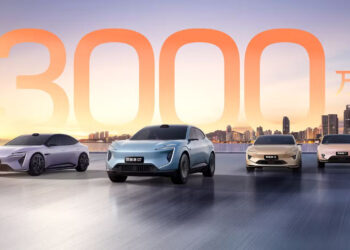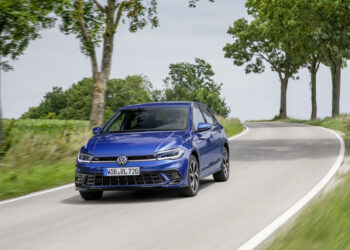SUVs (Sport Utility Vehicles) are the most popular car format in the world, but the impact that these vehicles have on environmental pollution, due to their larger dimensions and weight, concerns transportation authorities. Various entities warn about the effect of ‘car obesity’ on the environment, based on studies that reveal that “between 1960 and 2017, the weight of vehicles increased on average by 62%, their width by 14%, and their height by 21%”, and that this directly impacts what they pollute.
But that’s not all. In European cities, where streets are narrow and parking spaces are becoming scarcer, experts argue that the increasing size of SUVs is also causing space problems.
A recent study by Transport & Environment (T&E) revealed that new passenger vehicles in Europe increase in width by an average of 1 cm every two years, creating increasingly dangerous conditions for pedestrians and cyclists.

James Nix, the author of the T&E report, explained in an interview with The Guardian that “it may not seem like a huge number,” but the reality is that the average width of new cars in the European Union has already exceeded 180 cm, which means that almost half of the new vehicles on the market do not fit comfortably in European city parking spaces.
Currently, the maximum width allowed for vehicles in the European Union is 255 cm, which is the limit for buses and trucks in the 1990s. But, according to this expert, current passenger vehicles are dangerously approaching that maximum. And he gives examples:
Make and model Maximum width
BMW X5 / X6 2,004 mm
BMW X7 2,000 mm
BMW XM 2,004 mm
Mercedes-Benz GLS 2,030 mm
Audi Q8 1,995 mm
Porsche Cayenne 1,995 mm
VW Touareg 1,984 mm
Land Rover Defender 2,008 mm
Range Rover / Range Rover Sport 2,047 mm
Volvo EX90 2,039 mm
Kia EV9 1,980 mm
Experts also argue that the size of the vehicle – and especially its height – is crucial for road safety, concluding that increasing the height of a vehicle’s hood by 10 cm increases the risk of fatality in collisions with pedestrians and cyclists by an impressive 30%.

SUVs also weigh more on the wallet
A British study compared the average cost of fuel for an SUV and other body formats to understand which weighs more on drivers’ wallets. Not surprisingly, it is concluded that SUVs consume more due to their architecture – an SUV tends to be heavier and less aerodynamically efficient compared to vans, which despite also being large, can be more efficient in cutting through the air.
The study calculated the average fuel expenditure over four years for SUVs of all sizes (compact, small, medium, and large), and found significant differences compared to traditional body formats with similar engines. For example, the difference between a BMW X5 and a BMW 5 Series Touring is around €1800, according to the research.
The blame is not (only) on SUVs!
Cars need to “lose weight” in all segments. Take the case of compact cars, they are cars that have not lost their connection to the city but are getting larger. A study by OCU compared the original Renault 5 with a similar current model, the Dacia Sandero, and concluded that the modern compact car is 54% heavier than the classic French car from the 1980s, and is also 50 centimeters longer and 32 centimeters wider.
If we look at mid-size segments, there seems to be more restraint in exterior measurements. A modern family sedan has not increased in size as much, but the tendency is to gain weight. For example, the current generation Tesla Model 3, 100% electric, when compared to the gasoline-powered Renault 18, is 34 cm longer and 9 cm taller, but weighs almost twice as much (it is 96% heavier!).










